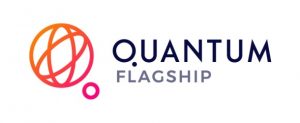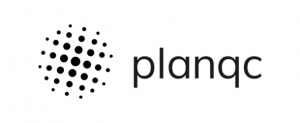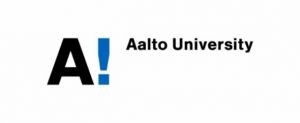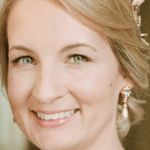Quantum News Briefs July 1: Quantum Flagship strengthens links between research & markets, Quantum technology one of new risks for insurers, Germany’s Planqc Raises €4.6m, & MORE

Quantum News Briefs opens today with the EU’s recent QUCATS (2022-2025) designed to strengthen links between research and the market, followed with an important overview of threats to the insurance industry with quantum technology being such a threat. Then we move to Planqc’s successful €4.6m funding, and Aalto’s time crystals and MORE
EU’s Quantum Flagship Consolidates the Course of Quantum Technologies
 The Quantum Flagship recently strengthened the link between the research community and the market by means of technology scale-up and transfer to companies. This will come with a new Coordination and Support Action, entitled QUCATS (2022-2025). One of the main goals of the initiative was to drive the research and development of quantum technologies throughout Europe and position the region as a worldwide leader of the field.
The Quantum Flagship recently strengthened the link between the research community and the market by means of technology scale-up and transfer to companies. This will come with a new Coordination and Support Action, entitled QUCATS (2022-2025). One of the main goals of the initiative was to drive the research and development of quantum technologies throughout Europe and position the region as a worldwide leader of the field.
The ramp-up phase is now over and the initiative is moving into its youth years, aimed to focus its efforts in strengthening liaisons with companies, SMEs and start-ups to transfer all the results obtained in the lab into prototypes, demonstrators, devices, and seek to scale them up to reach market potential customers eager to adapt and integrate these technologies in their production lines.
To successfully achieve this industrial perspective and aim to be market ready, the entire initiative is changing its internal structure to better fit these needs. In these next years, it will group together specific “SGA” (Specific Grant Agreement) projects, which will be organized under “FPA” (Framework Partnership Agreements) and pilot programs to optimize processes and aim to steadily promote the development of specific quantum technologies. Another major change is the involvement of many EC actors and structures beyond the initial Flagship boundaries, targeted to industry policies and also investment, such as EuroQCS, EuroQCI, QT Fund, and new instruments for joint EC and national support.
QUCATS will run from May 1, 2022 to April 30, 2025, in order to develop and maintain a vision on the strategy and growth of all quantum technologies. Quantum News Briefs has summarized; Click here to read the entire announcement.
*****
New Emerging Risks on Horizon for Insurers Include Quantum Computing
 Swiss Re Institute reminds the global community re/insurers there are new emerging risks on the horizon that could materialize. The Swiss Re Institute’s recent report discusses these threats: Thawing permafrost, Legal tech – is AI rendering justice? Quantum computing – a threat before an opportunity. Challenges in construction – raw material shortages and price increases. Eroding trust – new worries for public health.
Swiss Re Institute reminds the global community re/insurers there are new emerging risks on the horizon that could materialize. The Swiss Re Institute’s recent report discusses these threats: Thawing permafrost, Legal tech – is AI rendering justice? Quantum computing – a threat before an opportunity. Challenges in construction – raw material shortages and price increases. Eroding trust – new worries for public health.
Quantum News Briefs summarizes the quantum computing discussion:
Here are some of the potential impacts of QC identified by Swiss Re:
- It may take longer than anticipated for business-relevant applications to become available, and some could even fail, which translates into strategic, investment and operational risk.
- QC raises the potential for large-scale attacks on data security in general, as well as for targeted attacks on quantum research and development organizations. Further, cyber and property insurance losses could be triggered from attacks on insureds.
- Should standard encryption keys for internet communication, digital banking and electronic commerce be hacked, there could be cyber insurance and business interruption claims.
- Insurance operations also could be affected if an insurer or one of its third-party suppliers experiences a data privacy breach, which could lead to reputational damage and financial losses. In addition, the transition to safer (post-quantum) data encryption will be time consuming and expensive.
*****
Germany’s Planqc Raises €4.6m to Develop Quantum Computer that Can Store Information in Individual Atoms
 German start-up Planqc has raised €4.6m to develop a scalable quantum computer that can store information in individual atoms. Planqc was founded in April of this year by a team of scientists from the Max Planck Institute of Quantum Optics (MPQ) and Ludwig Maximilians University (LMU). Its funding round was led by UVC Partners and Speedinvest.
German start-up Planqc has raised €4.6m to develop a scalable quantum computer that can store information in individual atoms. Planqc was founded in April of this year by a team of scientists from the Max Planck Institute of Quantum Optics (MPQ) and Ludwig Maximilians University (LMU). Its funding round was led by UVC Partners and Speedinvest.
The start-up team noted that quantum computers are currently limited in the number of qubits and gate quality. The number of qubits can limit the amount of information that can be processed, while imperfect gates can lead to errors in computation.
Planqc aims to use a combination of quantum technologies to address one of the biggest challenges in quantum computing – scaling to thousands of qubits so that a quantum computer can solve real-world problems.
Planqc said its quantum computers store information on atoms, or “nature’s best qubits”, which can be arranged into highly scalable artificial crystals of light. The quantum information is then processed with quantum gates, which are based on precisely controlled laser pulses.
*****
‘Time crystals’ work around laws of physics in a potential step toward new kind of quantum computing

Scientists at Aalto University in Finland have connected two “time crystals” in a superfluid of helium-3 barely one-ten-thousandth of a degree above absolute zero. This could be a huge step toward a new kind of quantum computer.
Time crystals are bizarre structures of atoms, the existence of which was only predicted as recently as 2012, with experimental proof following a few years later. Time crystals consist of atoms that repeat in time rather than in space, oscillating back and forth, or spinning, even in their ground state. They can maintain this motion perpetually, without requiring an input of energy or losing energy in the process.
“Everyone knows that perpetual motion machines are impossible,” Samuli Autti, a research fellow and lecturer in physics at Lancaster University in the United Kingdom, said in a statement. “However, in quantum physics, perpetual motion is okay as long as we keep our eyes closed.”
Previous experiments have already shown that some time crystals can operate at room temperature, rather than needing to be cooled to nearly absolute zero, making their construction even easier. The next task, Autti’s team said, is to demonstrate that logic gate operations, which are functions that allow a computer to process information, can operate between two or more time crystals.
*****
The Quantum Computing Arms Race Is Not Just About Breaking Encryption Keys
 Adm. Mike Rogers and Nir Minerbi write to the readers of NextGov to explain that “quantum technology is more than the breaking of encryption keys”. Their message describes the strategic nature of quantum and its wide-reaching implications. The ability to solve problems and perform calculations that no existing classical computer can, or ever will be able to, opens a plethora of strategic opportunities and challenges.
Adm. Mike Rogers and Nir Minerbi write to the readers of NextGov to explain that “quantum technology is more than the breaking of encryption keys”. Their message describes the strategic nature of quantum and its wide-reaching implications. The ability to solve problems and perform calculations that no existing classical computer can, or ever will be able to, opens a plethora of strategic opportunities and challenges.
Much attention has been focused on decryption using quantum computers. The world’s financial systems and many computer networks are protected by an encryption scheme that was once considered unbreakable. While companies should indeed consider the positive and negative impact of quantum computers on their encryption and communication systems, Adm. Rogers and Minerbi explain they should also be aware that they can gain strategic leverage from superior quantum computing technology.
Quantum can be a game-changing differentiator when working with huge data sets, models that have numerous variables yet exhibit a high rate of change over time. This can apply to moonshot projects—curing cancer, decoding the human gene—but also to everyday problems such as optimizing shipping routes or balancing personal stock portfolios.
Machine learning is another example. Quantum computing offers dramatic new ML opportunities. They stem from the ability of a quantum computer to load much more information than classical ones, execute numerous calculations simultaneously and use these capabilities to uncover new and meaningful patterns.
Given the strategic and wide-ranging consequences of superior quantum computing capacity, it is fair to ask what constitutes technical superiority. Adm. Rogers & Minerbi reviewed two key components: hardware and software.
*****
Sandra K. Helsel, Ph.D. has been researching and reporting on frontier technologies since 1990. She has her Ph.D. from the University of Arizona.



















